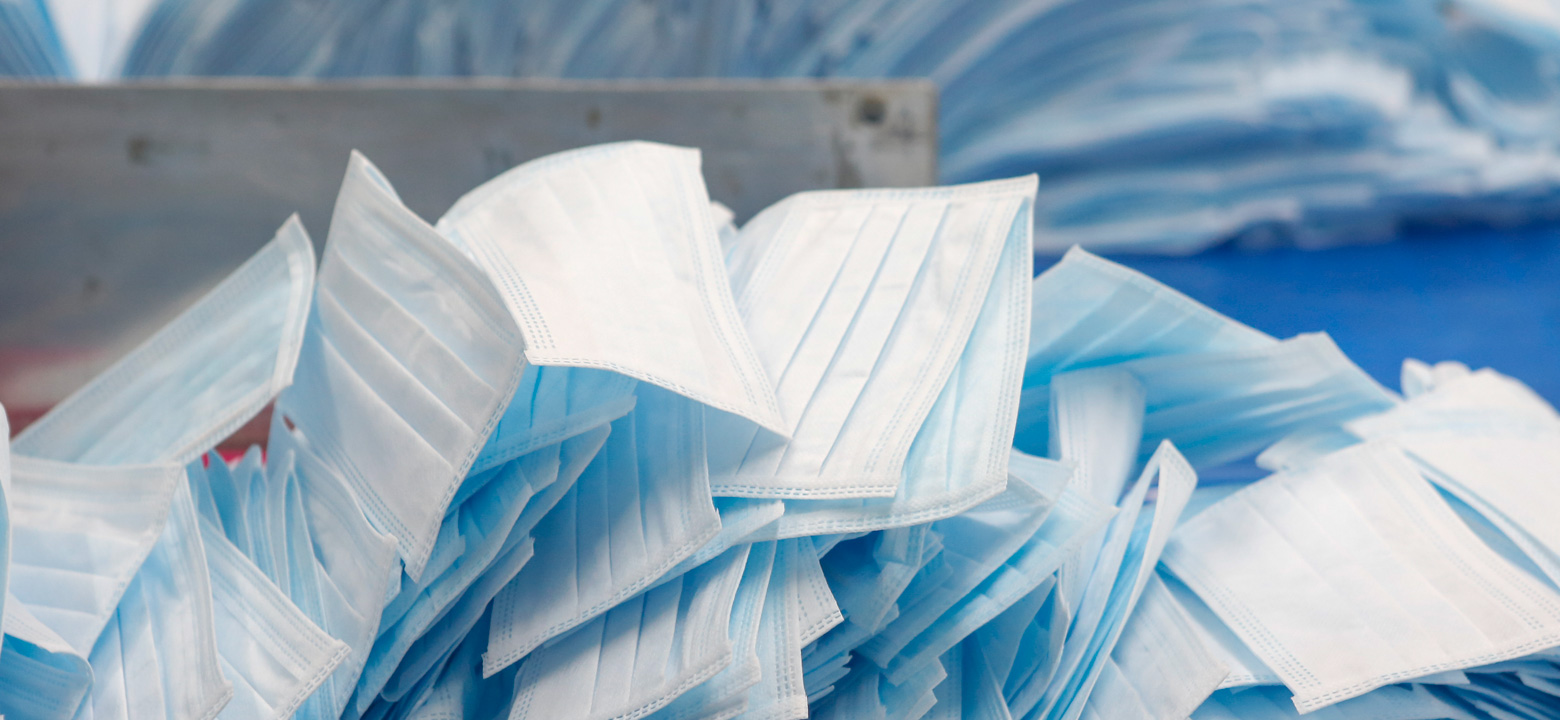
In many areas of the U.S., it's hard to find protective gear of any kind—not only to protect wearers from infection, but to help keep wearers from infecting others. While there are do-it-yourself tutorials for making ersatz masks, they don't provide the same level of protection as actual personal protective equipment (PPE). With hospitals and emergency crews facing a shortage of protective gear for doctors and ventilating equipment for patients, many manufacturers are shifting production to fill the need.
The Defense Production Act was enacted in response to the Korean War. One of its provisions allows the President to require businesses to fill orders necessary for national defense. Another allows for the establishment of mechanisms to allot facilities and materials to aid national defense. Some lawmakers have been urging the President to use the Defense Production Act to enforce the production of ventilators and PPE, but he has thus far been reluctant. Even so, U.S. manufacturers are making the change of their own volition.
Right now, manufacturers shifting to ventilators, masks, and other gear include:
General Motors. Ventec, a manufacturer of life support equipment, is relying on General Motors' manufacturing and logistical prowess to help them build more ventilators. As more COVID-19 patients require ventilator support, supplies are running low. An influx of new equipment could help keep hospitals from becoming overwhelmed.
Tesla. At the moment, Tesla CEO Elon Musk is communicating with medical technology manufacturer Medtronic. Medtronic is currently on track to double their ability to produce ventilators.
3M. 3M recently announced a dramatic increase to its production of face masks, to almost 100 million a month. This is in addition to an increased production of filtration equipment, disinfectants, and hand sanitizers.
Honeywell. Multinational conglomerate Honeywell is also ramping up production of N-95 masks. The company recently announced that it had nearly doubled its production not long ago.
Hanesbrands. Hanesbrands, a clothing company, is converting its factories and machinery to make face masks for medical personnel. It's also allowing its designs for use by other companies seeking to help meet the demand for protective masks. While the company isn't producing the N-95 masks most effective against the virus, the FDA has approved a prototype that can be used if the N-95 masks are unavailable.
General Electric. While General Electric's medical technology division already produces ventilators, the company recently announced that it was dedicating more resources to step up production. In addition to ventilators, the company is also working to increase its output of CT, ultrasound, and x-ray equipment, as well as patient monitors.
Other companies are working hard to help offset the shortage of other gear needed for doctors and COVID-19 patients alike. Los Angeles Apparel, designer Christian Siriano, and swimwear company Karla Colletto are working to make surgical masks. Litex Industries, an outdoor furniture manufacturer, has also converted its equipment to help churn out masks.
Switching from producing other goods to making masks and ventilators is easier than it sounds. Experts point out that it isn't simply a matter of getting the right materials and changing production—there are very specific designs and specifications involved, especially with medical equipment. Workers need to be retrained to produce different goods, and new assembly lines need to be set up. If companies are unwilling to share their intellectual property with each other, the process could take even longer. This also doesn't take into account that many factories are shut down at the moment, and that this new medical equipment would still need to be tested for safety. Fraser Johnson, a professor of operations management at Western University's Ivey Business School, estimates that producing new ventilators may take as long as six months.
The federal and state governments are buying up medical gear almost as soon as it's produced. Beyond these contracts, there aren't yet grants or other incentives in place to help urge companies to make the change. The President has indicated an unwillingness to interfere with the market, relying instead on a call to action. Some members of Congress and the House of Representatives have expressed concern that this may initiate a bidding war between states and hospitals, but, thus far, it seems to be working.
Part of the problem with obtaining medical supplies during the pandemic is specificity. Hospitals require specific pieces of equipment to help their patients, ones that aren't needed very often otherwise. Most masks won't protect against the virus, only N-95s do. For this reason, hospitals are concerned about their ability to care for their patients and protect their staff. Fortunately, these manufacturers are heeding the call to action and shifting production to make the most critically important medical supplies.